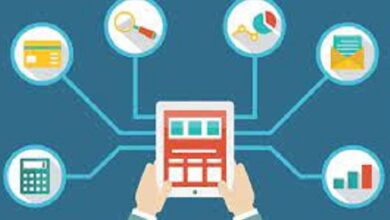How to anticipate customer needs importance and 5 Steps
Consumer needs are those needs that lead a person to search for and pay for a product or service that meets them. The need, then, is a kind of driving force within the purchase decision. The more effective a brand is in detecting these needs and offering products or services that cover them, the more sales it will have. In this article we we provide you the information about how to anticipate customer needs importance and 5 Steps?
Anticipating customer needs means knowing the expectations, desires and challenges that each person seeks to satisfy with your products and services, creating personalized solutions based on this information.
When a company focuses on meeting customer needs, it stops thinking about how to sell better and starts thinking about how to solve a problem efficiently . Or, better yet, how to prevent it from happening.
For example, people who have digital bank accounts may value agility, convenience, and security. Knowing what elements attract them to this type of service can help you improve the customer experience .
In other words, anticipating customer needs means adopting a customer-centric approach . That is, adopt a commercial strategy focused on the point of view of the individual who consumes what you sell, in order to increase the retention rates and profitability of your business.
Enhance your reading: How to keep employees engaged and motivated its measurement and importance
Why is it important to satisfy the customer?
Now that you know what it means to anticipate customer needs, you may be wondering: how important is it to satisfy them? Here are the top (data-driven!) reasons why you should know your audience better.
1-Because satisfied customers spend more
According to a study by Dimensional Research , 52% of consumers make an additional purchase after a positive service experience. This may mean a knowledgeable and friendly agent, a quick response, or the diversity of communication channels available to contact.
The quality of the service depends on concrete information about preferences and trends in consumer behavior. Therefore, it is important to have a tool capable of collecting this data and transforming it into useful knowledge, such as CRM software .
2-Because satisfied customers cost less
According to marketing and sales experts , acquiring a new customer can cost up to 7 times more than retaining those who already buy from you.
Anticipating customer needs allows you to save money and invest it in retention strategies . In addition to satisfying your loyal consumers and showing them that you care, this will be more profitable for you in the long run.
3-Because satisfied customers stay by your side in times of crisis
Anticipating customer needs also means having a plan of action for when things don’t go as planned. We hope that a crisis does not occur in your company, but if this becomes a reality, how will you talk to customers?
What contact channels will be used? What is the tone of voice in the messages? What steps should you take immediately? What professionals do you need to call?
Knowing and meeting customer needs can reward you. In fact, a recent study from Sprout Social found that 9 in 10 people would support a company during a crisis if it had a track record of transparency.
How to anticipate customer needs?
Anticipating customer needs is a process of continuous improvement, which must be observed and adapted as your audience’s desires and challenges evolve. With that in mind, we list five steps to get you off to a good start.
1. Create a sales funnel
A sales funnel is a visual representation of the steps a potential customer takes from discovering your brand to purchasing your products or services. Designing it allows us to anticipate the client’s needs at each stage, offering relevant solutions at the right time.
2. Conduct satisfaction surveys
Sometimes the best way to anticipate customer needs is to ask. Satisfaction surveys are a great way to learn about your audience’s preferences and opinions first-hand.
3. Offer omnichannel support
Customers choose communicate effectively with others helps us to form bonds, to coexist and work as a team. Simply put, communication channels with a company based on the speed of response they want and the complexity of their question. Providing omnichannel support allows conversations to be transferred from one platform to another seamlessly, depending on the needs of the customer experience .
In addition to being more efficient, this approach prevents people from having to repeat the same information over and over again, making the support process tedious and irritating. See how this type of technology works:
4. Identify trends based on data
Anticipating customer needs cannot be a process based on guesswork. You need concrete data to make strategic decisions and allocate available resources intelligently.
For this, a tool is necessary that collects, stores and processes this information in a unified way. This will allow you to identify consumption habits , behavior patterns and trends for the coming months.
5. Optimize your teams’ work environment
According to Reports , nearly 50% of support agents don’t have the right tools to do their job successfully — whether it’s a knowledge base or messaging apps .
Optimizing your teams’ work environment, encouraging the use of integrated resources and collaboration between professionals can be an important step to meeting customer needs at all times.




